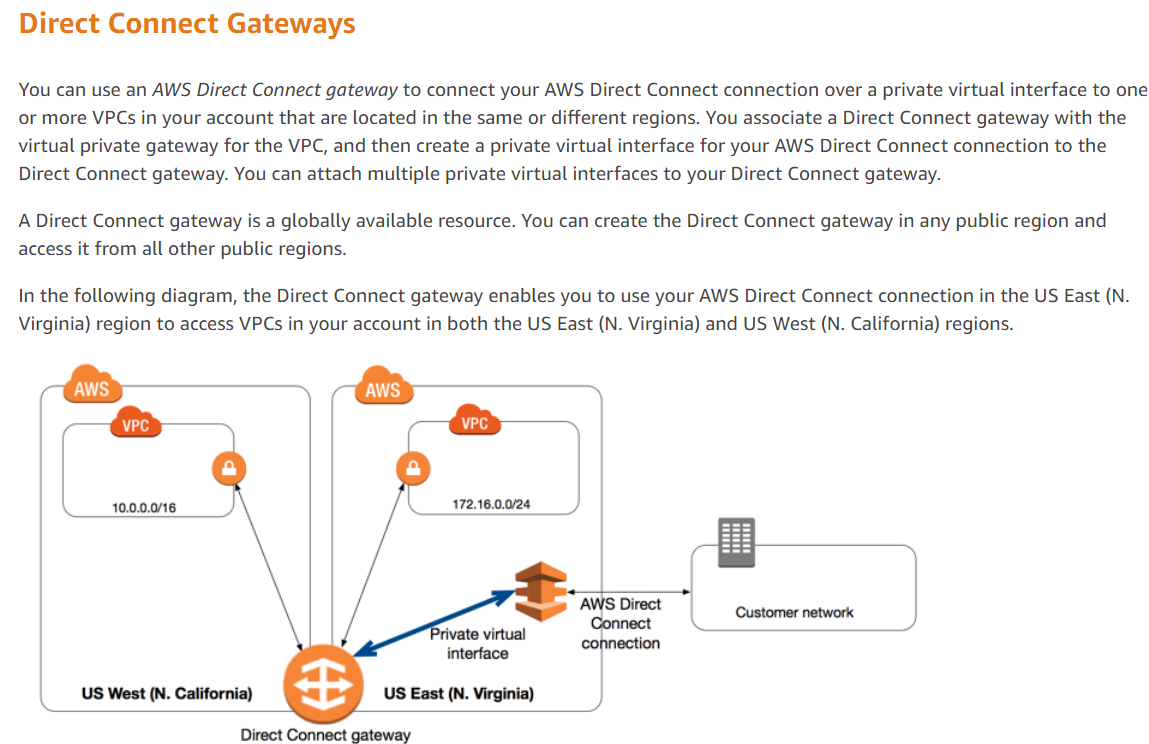Connect On-Premises Data Center to AWS VPCs
Question
Your company currently has set up an AWS Direct Connect connection between their on-premises data center and a VPC in the us-west region.
They now want to connect their data center to a VPC in the us-east region.
They need to ensure latency is low and maximum bandwidth for the connection.
How could they accomplish this in a cost-effective manner?
Answers
Explanations
Click on the arrows to vote for the correct answer
A. B. C. D.Correct Answer: B.
The AWS Documentation mentions the following.
Option A is incorrect since this would add more costs and maintenance.
Option C is incorrect since AWS VPN does not lead to a low latency connection.
Option D is incorrect since this is used to combine 2 VPC's together.
For more information on Direct Connect gateways, please refer to the below URL-
https://docs.aws.amazon.com/directconnect/latest/UserGuide/direct-connect-gateways.html
To connect the on-premises data center to a VPC in the US East region in a cost-effective manner while ensuring low latency and maximum bandwidth, the following options can be considered:
Option A: Create an AWS Direct Connect connection between the VPC in the US East region and the on-premise data center.
This option involves setting up an additional AWS Direct Connect connection between the VPC in the US East region and the on-premises data center. This option provides a dedicated network connection and can support up to 10 Gbps of network bandwidth. However, this option can be costly as it involves setting up an additional Direct Connect connection.
Option B: Setup an AWS Direct Connect gateway.
An AWS Direct Connect gateway is a new solution that allows customers to connect their Direct Connect connections to multiple VPCs in different regions using a single Direct Connect connection. With this option, the on-premise data center can connect to the Direct Connect gateway, which in turn connects to the VPCs in both the US West and US East regions. This option provides low latency and maximum bandwidth and can be a cost-effective solution compared to setting up an additional Direct Connect connection.
Option C: Create an AWS VPN managed connection between the VPC in the US East region and the on-premise data center.
This option involves setting up a VPN connection between the on-premise data center and the VPC in the US East region. This option is less expensive than setting up an additional Direct Connect connection but may not provide the same level of performance as a Direct Connect connection. Additionally, VPN connections are limited to 1.25 Gbps of network bandwidth.
Option D: Use VPC peering.
VPC peering allows customers to connect two VPCs together, allowing traffic to flow between them as if they were on the same network. This option is not suitable for connecting an on-premises data center to a VPC. VPC peering is only suitable for connecting VPCs within the same AWS account or between different AWS accounts in the same region.
In summary, option B, setting up an AWS Direct Connect gateway, is the best solution as it provides low latency, maximum bandwidth, and can be a cost-effective solution compared to setting up an additional Direct Connect connection.